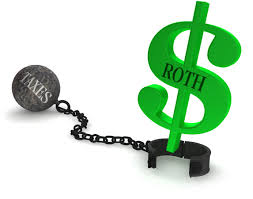Using Roth IRAs for Tax-Free Retirement Income

Roth IRAs are a tax-advantaged retirement account that individuals can establish to provide tax-free income in retirement. Contributions made to a Roth IRA do not get any special tax treatment, but the growth of those funds over time can be tax-free if the withdrawals are made after age 59 ½ or for other qualifying events.
In 2014 and 2015, contributions to Roth IRAs are limited to $5,500 per person per year and $6,500 for those 50 years of age or older. Those with adjusted gross incomes over $114,000 for single taxpayers or $181,000 for married taxpayers in 2014 may be limited or not eligible to make Roth IRA contributions. Roth IRA contributions can be made as late as April 15 of the following year. This gives investors the ability to prepare their taxes and calculate the tax implications of making deductible IRA contributions or non-deductible Roth IRA contributions. Taxpayers, or their spouses, must have earned income from wages or self-employment equal to or greater than the amount of the contributions.
The best way to get the most from this arrangement is to have significant gains in a Roth IRA. While this is easier said than done, Roth IRAs are ideal for younger workers who have many years for their investment earnings to compound. Typically, younger earners are not in the highest tax brackets and have the added benefit of not giving up a tax deduction if these contributions had instead been made to a Traditional IRA.
Likewise, the investments you choose for your Roth IRA should be designed to grow nicely to take advantage of tax-free growth. While no one can consistently predict financial markets, certain asset classes have consistently outperformed others over long time periods. For example, stocks have more volatility but have historically grown faster than bonds and CDs. In our practice, Roth IRAs are often reserved for stocks while other investment accounts hold investments that create an overall balance.
While a long time horizon is easy to imagine for a younger person, older investors who will likely not run out of money should consider the idea that some of their money will be passed to their heirs who may have a longer time horizon. Retirees with part-time income have the option of adding to Roth IRAs up to the amount of their earnings or the stated limits.
A second method of moving funds into a Roth IRA is through a Roth conversion. In this transaction, an investor moves funds directly from their Traditional IRA to their Roth IRA. The amount of funds transferred will be taxed as income that year, but any subsequent gains can grow tax-free. The decision to make a Roth conversion depends on several factors including the tax cost and the investment time horizon. Roth IRAs are not subject to Required Minimum Distribution (RMD) rules so making Roth conversions in your 50s and 60s can be a great way to reduce the RMDs in your 70s. Recent tax law changes have made taxes lighter on the lower end of the income ranges and higher on the upper incomes. If you find yourself in the lower 10% and 15% tax brackets, Roth conversions may be a way of spreading your income over multiple years at a lower tax cost.

